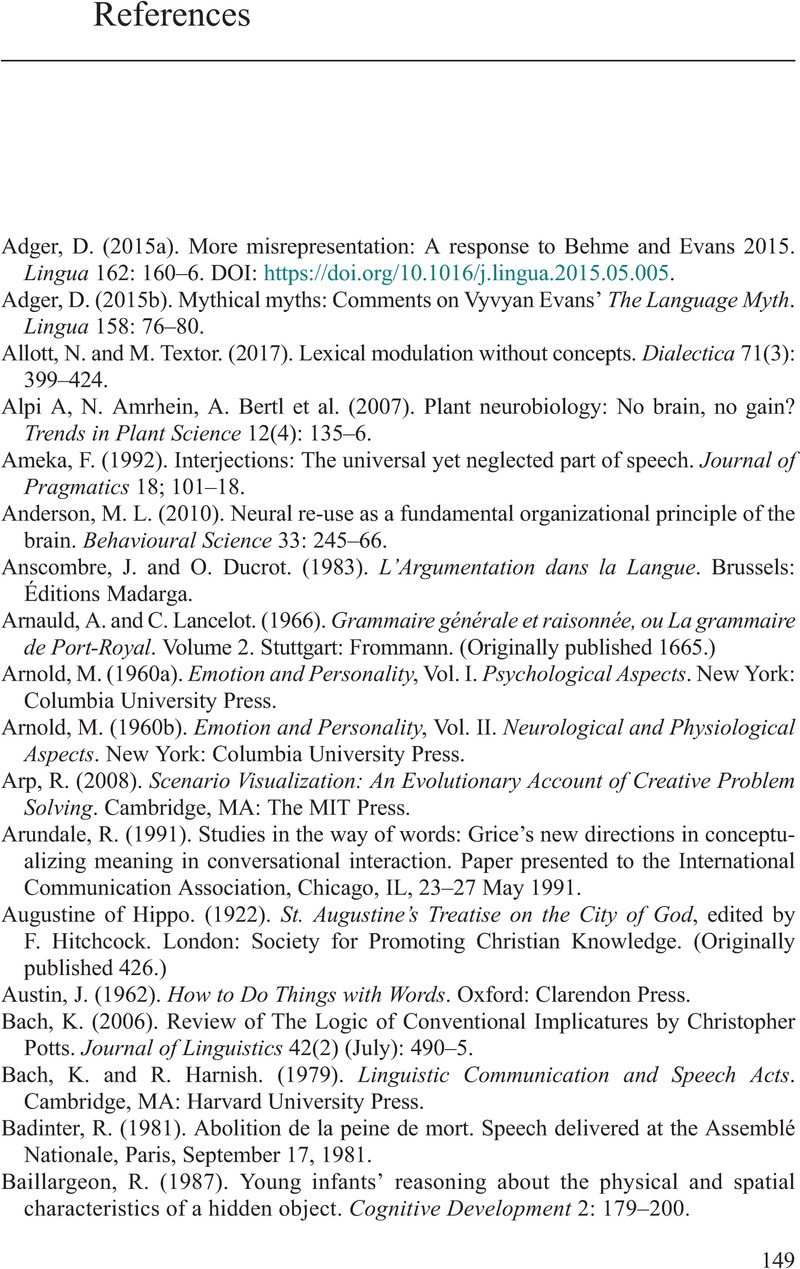Book contents
- Pragmatics and Emotion
- Pragmatics and Emotion
- Copyright page
- Dedication
- Contents
- Acknowledgements
- 1 Introduction
- 2 Pragmatics and Emotion
- 3 What Is Emotion?
- 4 From Proto-pragmatics to Pragmatics
- 5 Relevance Theory, Non-propositional Content and Ineffability
- 6 Beyond Propositions
- 7 Emotion and Evolution
- 8 Pragmatics and Emotion
- References
- Index
- References
References
Published online by Cambridge University Press: 13 December 2023
- Pragmatics and Emotion
- Pragmatics and Emotion
- Copyright page
- Dedication
- Contents
- Acknowledgements
- 1 Introduction
- 2 Pragmatics and Emotion
- 3 What Is Emotion?
- 4 From Proto-pragmatics to Pragmatics
- 5 Relevance Theory, Non-propositional Content and Ineffability
- 6 Beyond Propositions
- 7 Emotion and Evolution
- 8 Pragmatics and Emotion
- References
- Index
- References
Summary

- Type
- Chapter
- Information
- Pragmatics and Emotion , pp. 149 - 166Publisher: Cambridge University PressPrint publication year: 2023

